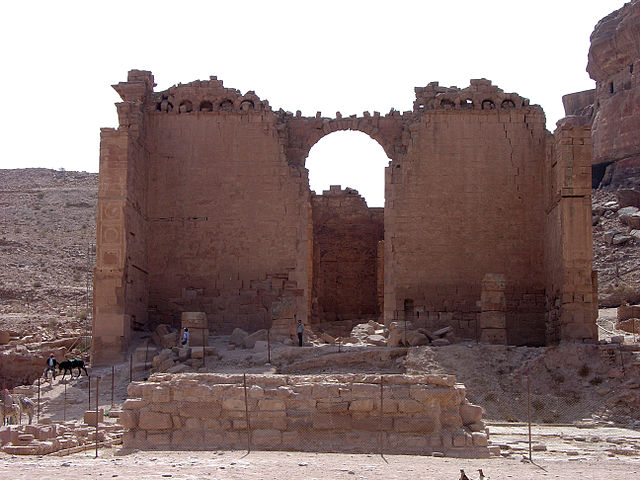
Qasr al-Bint (front)
Petra, Jordan

|
Qasr al-Bint (front)Petra, Jordan |
The temple known today as "Qasr al-Bint" sits at the western end of a long temenos, past the Temenos Gate at the end of the Colonnaded Street. The large temple (see the people below for scale) measures about 60m wide by 60m deep, or 200' square, including the porch. Its standing walls are 23m (76') high. The temple faces north, towards the temenos, and was approached by a broad flight of steps. A large altar stands in the temenos, in front of the temple. This photo looks south across the altar to the porch of the temple. The porch was originally fronted by four large columns, whose bases are seen here. The cella of the temple is located beyond the porch wall and through the arched entrance.
Qasr al-Bint was built in the 1st century BC, by Obodas III, on an earlier foundation. There are three chambers in the cella, and therefore three gods who were worshiped here. As this is assumed to be the chief temple of Petra, one would expect a dedication to Dushara. However, on the basis of two inscriptions of the Roman period, the temple seems to be dedicated to al'Uzza (Allat), Ba'al-Shamin (Jupiter), and to a still-unidentified third god or goddess1.
The temple's modern name, "Qasr al-Bint al-Faroun," means "The Castle of the Daughter of Pharaoh." This relates to a local legend involving the pharaoh of the Exodus who, as the tale is told, got tired of pursuing the Israelites and eventually settled with his court here in Petra. While not historically correct in any way, these stories remain as an entertaining part of the folklore of Petra.

|

|